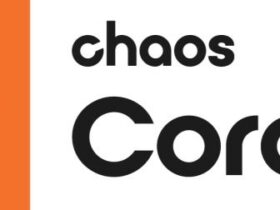Every ground-breaking product, stunning visual or innovative solution starts as a spark in someone’s mind. But how does that initial idea transform into a tangible reality? The creative design process is the bridge that connects imagination to execution, guiding designers through a series of steps that refine and develop concepts into fully realized creations. Whether crafting a logo, creating a new app, or reimagining a living space, you’re ultimately addressing a need or challenge. This process provides a structured approach to tackling complex issues while leaving room for inspiration and innovation.
Stages of creation
While every designer and project may have unique needs, most creative endeavours follow a similar pattern.
- Research and discovery
Before diving into imagination, it’s crucial to understand the context of your project. This stage involves gathering information about your client, target audience, competitors, and industry trends. Designers often conduct interviews, surveys, and market research to understand the challenge at hand comprehensively.
- Define the problem
With a wealth of information at your fingertips, it’s time to distil your findings into a clear problem statement. Who are you solving it for? Defining the problem helps focus your efforts and provides a north star for the entire project.
- Ideation and conceptualization
This is where creativity truly takes flight. Armed with a deep understanding of the problem, designers brainstorm potential solutions. Techniques like mind mapping, sketching, and rapid prototyping help generate many ideas. The key is to suspend judgment initially and explore diverse possibilities.
- Refinement and selection
As ideas flow, patterns emerge. This stage involves evaluating concepts against your problem statement and project goals. Designers often create mood boards, rough mockups, or basic prototypes to visualize potential directions. Collaboration with team members and stakeholders helps narrow options to the most promising solutions.
The design process gains momentum as concepts take shape. Designers find more clarity in their vision, experimenting with different elements to create cohesive and practical solutions. This iterative phase involves constant refinement, with each version building upon the strengths of the last.
- Prototyping and testing
Bringing ideas into the physical (or digital) world is crucial. Prototypes allow designers to test functionality, gather user feedback, and identify potential issues early. This stage often involves multiple iterations, with each round of testing informing further improvements.
- Implementation and launch
Once a final design is approved, it’s time to bring it to life. This may involve working with developers and manufacturer specialists to execute the vision faithfully. A smooth handoff process and clear communication are essential for translating design intent into reality.
- Evaluation and iteration
The creative design process continues after launch. Gathering data on how users interact with the final product provides valuable insights for future improvements. This commitment to continuous refinement ensures that designs remain relevant and practical.
- Embracing the creative journey
While these stages provide a framework, it’s important to remember that the design process is rarely linear. Designers often cycle back to earlier stages as new information comes to light or unexpected challenges arise. This flexibility is strength, allowing for adaptation and incorporating fresh insights throughout the project.
Modern designers have a wide array to support the creative design process. Technology has revolutionized how designers bring ideas to life, from sophisticated software for 3D modelling and digital illustration to collaborative platforms that facilitate remote teamwork. However, traditional sketching and physical prototyping are invaluable for quick ideation and tactile exploration.





